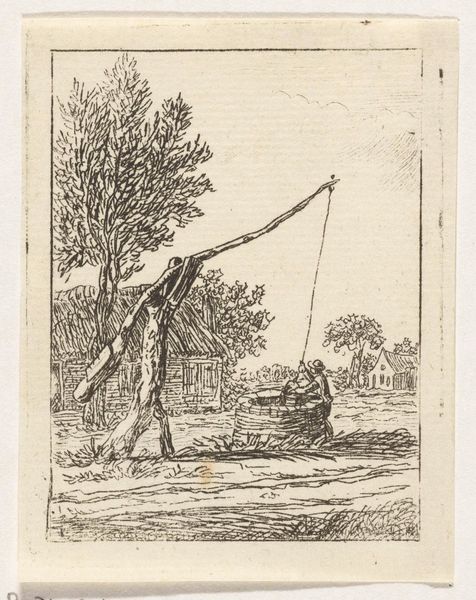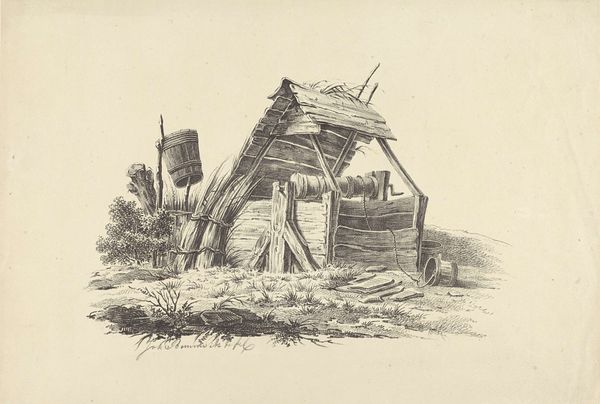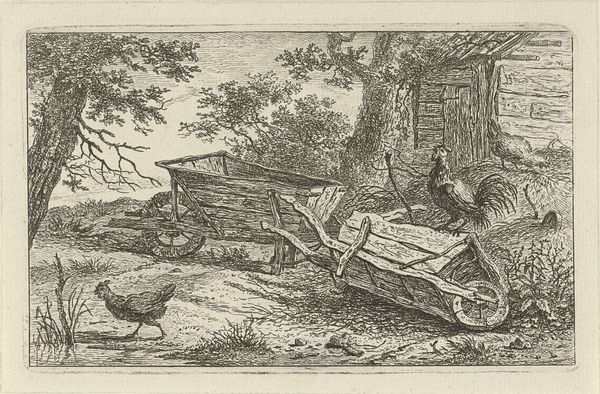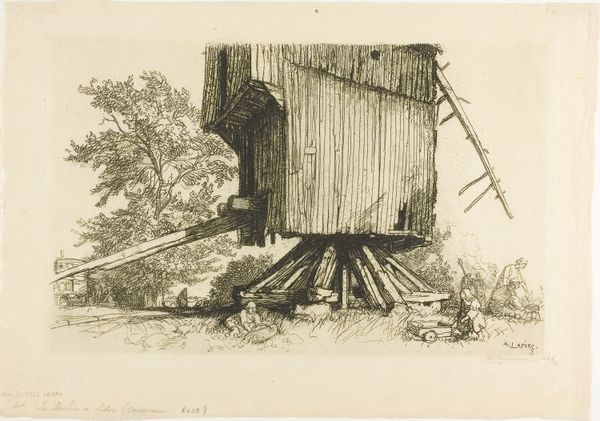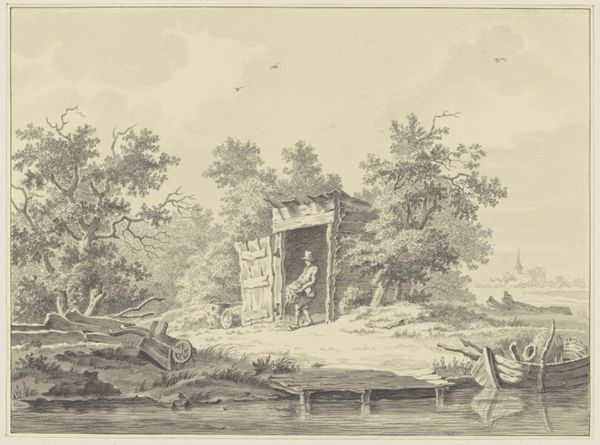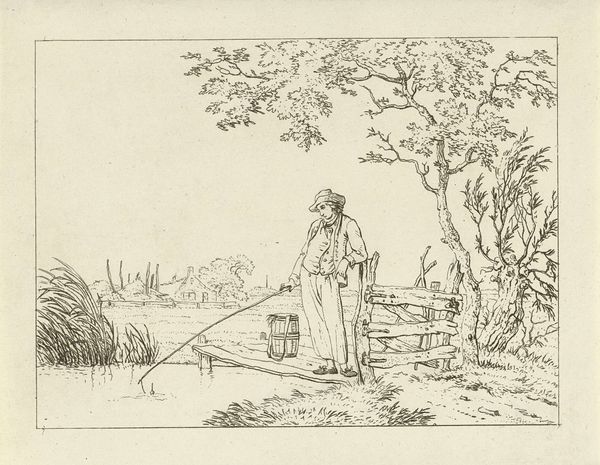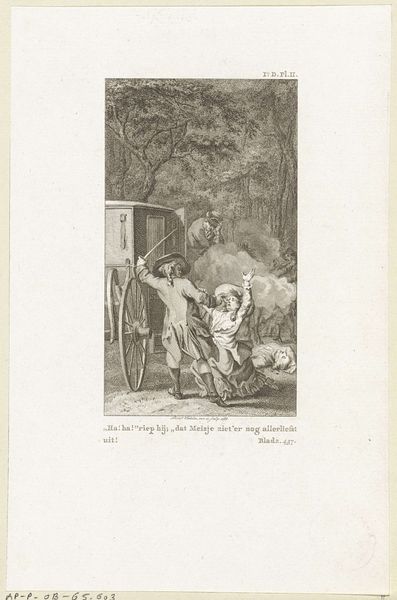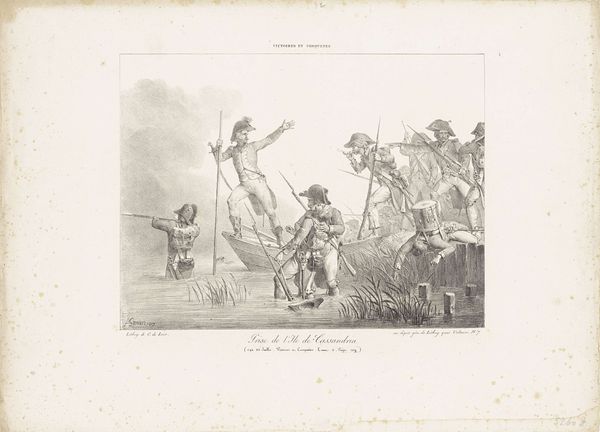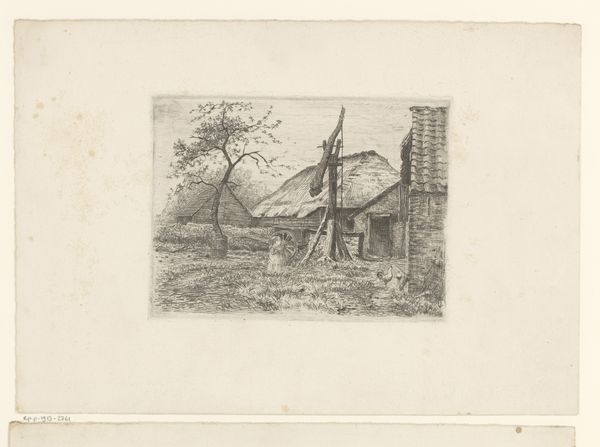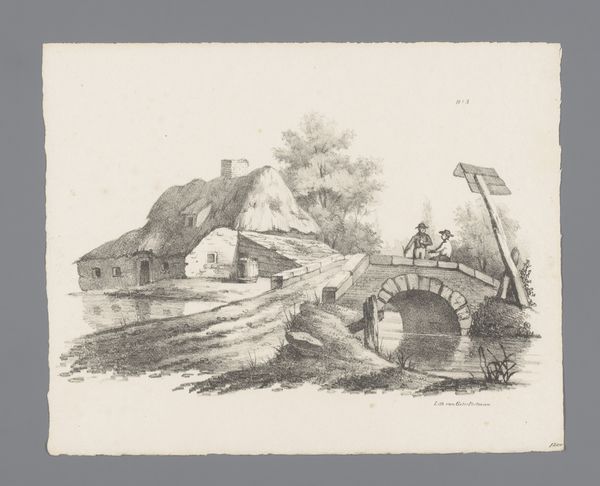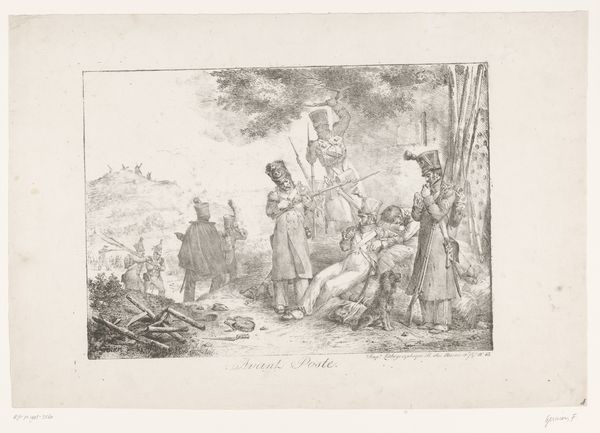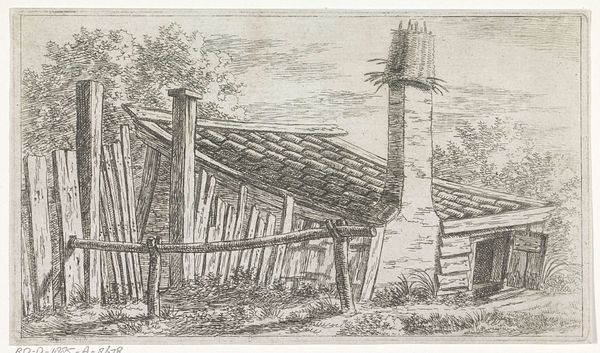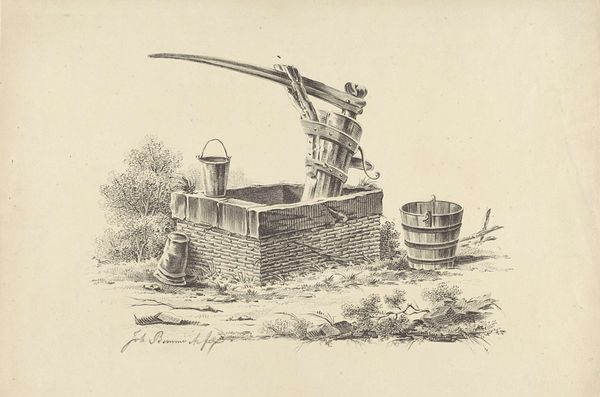
drawing, paper, pencil, engraving
#
drawing
#
mechanical pen drawing
#
pen illustration
#
pen sketch
#
old engraving style
#
landscape
#
figuration
#
paper
#
personal sketchbook
#
sketchwork
#
romanticism
#
pen-ink sketch
#
pencil
#
pen work
#
sketchbook drawing
#
genre-painting
#
history-painting
#
storyboard and sketchbook work
#
engraving
Dimensions: height 102 mm, width 122 mm
Copyright: Rijks Museum: Open Domain
Editor: This is "Two Figures at an Open Gate," a drawing from 1824 by Johannes Mock, housed at the Rijksmuseum. It seems like a simple genre scene, but there's something unsettling about the dilapidated gate and the figures positioned within it. What’s your interpretation of this work? Curator: The broken gate immediately draws my attention. How do you see it in relation to the social and political climate of the 1820s? Could it symbolize something larger? Think about the restoration period in Europe after Napoleon's defeat, the reshaping of borders, the dismantling of revolutionary ideals. Is Mock hinting at the precarious state of order? Editor: That’s a really interesting point! I hadn’t considered that. It’s not just a literal depiction of disrepair, but possibly a commentary on societal shifts. Is the gate an exclusionary point, or a liberation that these people might be crossing? Curator: Exactly. Now consider the figures. Who are they? Are they entering or leaving? Are they landowners, laborers? These are choices Mock made, that could represent those with newfound opportunities after social change, or are they disenfranchised due to the redrawing of socioeconomic status after great upheaval. The presence of genre, which deals with everyday people, further complicates any direct reading. Mock might be speaking to history’s impact on normal life. Editor: That’s fascinating, especially given that this piece exists at the intersection of genre and history-painting! I didn’t pick up on those sociopolitical undercurrents at first, but now the image has a whole new dimension. Curator: It's often through these seemingly small details that art quietly reflects—or even challenges—the larger power structures of its time. What began as a personal sketchbook work can open onto broader cultural narratives.
Comments
No comments
Be the first to comment and join the conversation on the ultimate creative platform.
